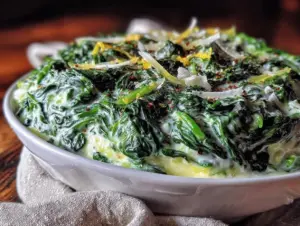There’s something magical about the tangy, sweet flavor of lemon in desserts, isn’t there? This Ultimate Pioneer Woman Lemon Cake is a celebration of citrusy goodness, packed with the perfect balance of tartness and sweetness. If you’re a fan of refreshing, zesty treats that brighten up your day, this lemon cake is the recipe you’ve been waiting for! It’s easy to make, ridiculously delicious, and perfect for any occasion—from casual brunches to celebratory gatherings. Let’s dive into the story, tips, and steps that make this dessert unforgettable.
The Story Behind the Lemon Cake
Lemon cake has been a beloved dessert for centuries. Originating from European kitchens, citrus-based cakes were once considered a luxury due to the rarity of lemons. Over time, they evolved to become staples in households, especially during spring and summer when the bright flavors felt like sunshine on a plate.
For me, this Pioneer Woman Lemon Cake recipe has a special place in my heart. I remember stumbling upon it during a weekend binge of comfort-food cooking shows. The effortless charm of the recipe and its focus on fresh, simple ingredients immediately drew me in. Since then, it has become my go-to dessert for brightening up holidays and celebrations. Whether it’s Easter Sunday or a random Tuesday needing a pick-me-up, this lemon cake always delivers.
What makes this cake even more lovable is its versatility. You can dress it up with powdered sugar, drizzle it with a tangy lemon glaze, or serve it with a dollop of whipped cream. No matter how you present it, it’s bound to be a crowd-pleaser.
Let’s Talk Ingredients
The secret to the perfect Ultimate Pioneer Woman Lemon Cake lies in the quality of your ingredients. Let’s break them down:
- Lemons: Fresh lemons are non-negotiable here. Look for plump, vibrant lemons with smooth skin. Meyer lemons are a great option if you want a slightly sweeter flavor. Avoid bottled lemon juice—it simply doesn’t compare to the real deal.
- Flour: All-purpose flour works beautifully for this recipe. If gluten-free is your thing, you can substitute with a 1:1 gluten-free baking mix.
- Butter: Use unsalted butter for a rich, creamy texture. Let it soften at room temperature before mixing it into the batter.
- Sugar: Granulated sugar gives this cake its sweetness while balancing the tartness of the lemon. If you’re feeling adventurous, try swapping a portion with coconut sugar for a unique twist.
- Eggs: Fresh eggs are essential for a fluffy, moist cake. If you’re egg-free, consider a flaxseed egg substitute, but keep in mind the texture will slightly differ.
- Lemon zest and juice: Zest adds concentrated lemon flavor, while the juice provides tanginess. Together, they’re the stars of the show.
- Baking powder: This ensures your cake rises beautifully without being dense.
- Powdered sugar: Perfect for dusting or making a silky glaze to finish off your cake.
Keep your lemons in the fridge to maintain their freshness. If you end up with extra zest or juice, store them in an airtight container for a few days or freeze them for later.
Equipment Needed
To make this Ultimate Pioneer Woman Lemon Cake, you’ll need a few kitchen essentials:
- Mixing bowls: A couple of medium-sized bowls for combining dry and wet ingredients.
- Electric mixer: Helpful for achieving a smooth and fluffy batter. A hand whisk works too if you’re ready for an arm workout!
- Zester: A good microplane zester is key to getting fine lemon zest without the bitter pith.
- Measuring cups and spoons: Precision is important for baking, so accurate measurements are a must.
- Cake pan: A standard 9-inch round cake pan or loaf pan works well. Make sure it’s greased and lined with parchment paper for easy removal.
- Cooling rack: This ensures your cake cools evenly without becoming soggy on the bottom.
If you don’t have a zester, you can use the small holes on a box grater. Just be gentle to avoid grating the bitter white part of the lemon.
Step-by-Step Preparation
Ready to whip up this delightful Ultimate Pioneer Woman Lemon Cake? Follow these simple steps:
- Preheat your oven: Set it to 350°F (175°C). Grease your cake pan and line the bottom with parchment paper.
- Prepare the lemon zest and juice: Zest two lemons (about 2 tablespoons) and squeeze out the juice (around 1/3 cup). Set both aside.
- Mix the dry ingredients: In a bowl, whisk together 2 cups (240g) of all-purpose flour, 2 teaspoons of baking powder, and a pinch of salt.
- Cream the butter and sugar: In another bowl, beat 1 cup (225g) of unsalted butter and 1 1/2 cups (300g) of sugar until light and fluffy—about 3 minutes.
- Add the eggs: Beat in 4 eggs, one at a time, ensuring each is fully incorporated.
- Incorporate lemon zest and juice: Stir in the lemon zest and juice for that signature citrusy punch.
- Combine wet and dry ingredients: Gradually add the flour mixture to the wet ingredients, alternating with 1/2 cup (120ml) of milk. Mix until just combined.
- Bake: Pour the batter into your prepared pan and smooth the top. Bake for 45-50 minutes or until a toothpick inserted in the center comes out clean.
- Cool: Let the cake cool in the pan for 10 minutes before transferring it to a wire rack to cool completely.
- Optional glaze: Mix 1 cup (120g) of powdered sugar with 2-3 tablespoons of lemon juice. Drizzle over the cooled cake for extra zing.
Your kitchen will smell absolutely heavenly as this cake bakes—trust me!
Cooking Tips & Techniques
Here are some handy tips to ensure your Ultimate Pioneer Woman Lemon Cake turns out perfect:
- Room temperature ingredients: Make sure your butter, eggs, and milk are at room temperature. It helps the batter mix evenly.
- Zesting hack: If your lemons are cold, microwave them for 10 seconds to make zesting easier.
- Don’t overmix: Overmixing can make your cake dense. Stir until the ingredients are just combined.
- Check your oven: Oven temperatures can vary, so keep an eye on your cake as it bakes. If the top browns too quickly, cover it loosely with foil.
If your glaze turns out too thick, just add a splash of milk or lemon juice to adjust the consistency.
Variations & Adaptations
Here are a few ways to make this recipe your own:
- Gluten-free: Use a gluten-free all-purpose flour blend for a celiac-friendly version.
- Seasonal twist: Swap out lemons for oranges or limes for a different citrus flavor profile.
- Dairy-free: Replace butter with vegan butter and milk with almond or oat milk.
- Berry addition: Fold in 1 cup of fresh blueberries or raspberries for a fruity touch.
Last summer, I tried adding a handful of poppy seeds to the batter, and it was a game-changer!
Serving & Storage Suggestions
This cake is best served at room temperature. Slice it up and pair with a cup of tea or coffee for a classic combo. If you’re hosting a party, sprinkle powdered sugar on top or add fresh berries for a stunning presentation.
To store leftovers, wrap the cake tightly in plastic wrap and keep it in the fridge for up to 5 days. It also freezes beautifully—just slice it into portions, wrap each piece, and freeze for up to 3 months.
To reheat, let it thaw overnight in the fridge and warm slices in the microwave for 10 seconds.
Nutritional Information & Benefits
Here’s a rough estimate of the nutritional values per serving (1 slice):
- Calories: 320
- Carbohydrates: 45g
- Protein: 4g
- Fat: 14g
- Sodium: 150mg
Lemons are rich in vitamin C, which supports your immune system, while eggs provide protein and essential nutrients. Just remember, moderation is key—this is still a dessert after all!
Conclusion
This Ultimate Pioneer Woman Lemon Cake is worth every bite. It’s bright, zesty, and packed with flavors that make you smile. Whether you’re baking for loved ones or treating yourself, this cake is pure sunshine in dessert form.
I’d love to hear how your lemon cake turns out! Share your experience in the comments below, or tag me in your creations on social media. Happy baking!
FAQs
Can I use bottled lemon juice instead of fresh?
Fresh lemon juice is highly recommended for the best flavor, but bottled lemon juice can work in a pinch.
What’s the best way to zest a lemon?
Use a microplane zester and zest only the yellow part of the peel—avoid the bitter white pith.
Can I freeze this lemon cake?
Yes! Slice the cake, wrap each piece in plastic wrap, and freeze for up to 3 months.
How do I make the cake more moist?
Ensure you don’t overbake the cake and use room-temperature ingredients for a tender texture.
Can I use a bundt pan instead of a round cake pan?
Absolutely! Adjust the baking time slightly, as bundt cakes may require a few extra minutes.



